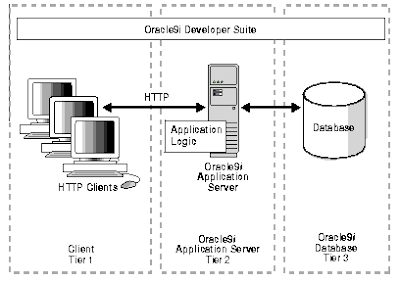An Oracle database is a collection of data treated as a unit. The purpose of a database is to store and retrieve related information. A database server is the key to solving the problems of information management.
We can set primary key on table up to 16 columns of table in oracle 9i as well as in Oracle 10g.
The maximum number of data files in Oracle 9i and Oracle 10g Database is 65,536.
Oracle 9i Architecture:
- Oracle 9i is an Object/Relational Database Management System specifically designed for e-commerce.
- Oracle 9i, a version of Oracle database. The letter “i” refers to the internet.
- It can scale ten thousands of concurrent users.
- It includes Oracle 9i Application server and Oracle 9i Database that provide a comprehensive high-performance infrastructure for Internet Applications.
- It supports client-server and web based applications.
- The maximum Database holding capacity of Oracle 9i is upto 512 peta bytes(PB).[1 Peta Byte = 1000 Tera Byte]
- It offers Data warehousing features and also many management features.
We can set primary key on table up to 16 columns of table in oracle 9i as well as in Oracle 10g.
The maximum number of data files in Oracle 9i and Oracle 10g Database is 65,536.
Oracle 9i Architecture:
Oracle Storage Structures:
An essential task of a relational database is data storage. This section briefly describes the physical and logical storage structures used by Oracle Database.
Physical Storage Structures
The physical database structures are the files that store the data. When you execute the SQL command
CREATE DATABASE, the following files are created:- Data filesEvery Oracle database has one or more physical data files, which contain all the database data. The data of logical database structures, such as tables and indexes, is physically stored in the data files.
- Control filesEvery Oracle database has a control file. A control file contains metadata specifying the physical structure of the database, including the database name and the names and locations of the database files.
- Online redo log filesEvery Oracle Database has an online redo log, which is a set of two or more online redo log files. An online redo log is made up of redo entries (also called redo records), which record all changes made to data.
Logical Storage Structures
This section discusses logical storage structures. The following logical storage structures enable Oracle Database to have fine-grained control of disk space use:
- Data blocksAt the finest level of granularity, Oracle Database data is stored in data blocks. One data block corresponds to a specific number of bytes on disk.
- ExtentsAn extent is a specific number of logically contiguous data blocks, obtained in a single allocation, used to store a specific type of information.
- SegmentsA segment is a set of extents allocated for a user object (for example, a table or index), undo data, or temporary data.
- TablespacesA database is divided into logical storage units called tablespaces. A tablespace is the logical container for a segment. Each tablespace contains at least one data file.


No comments:
Post a Comment